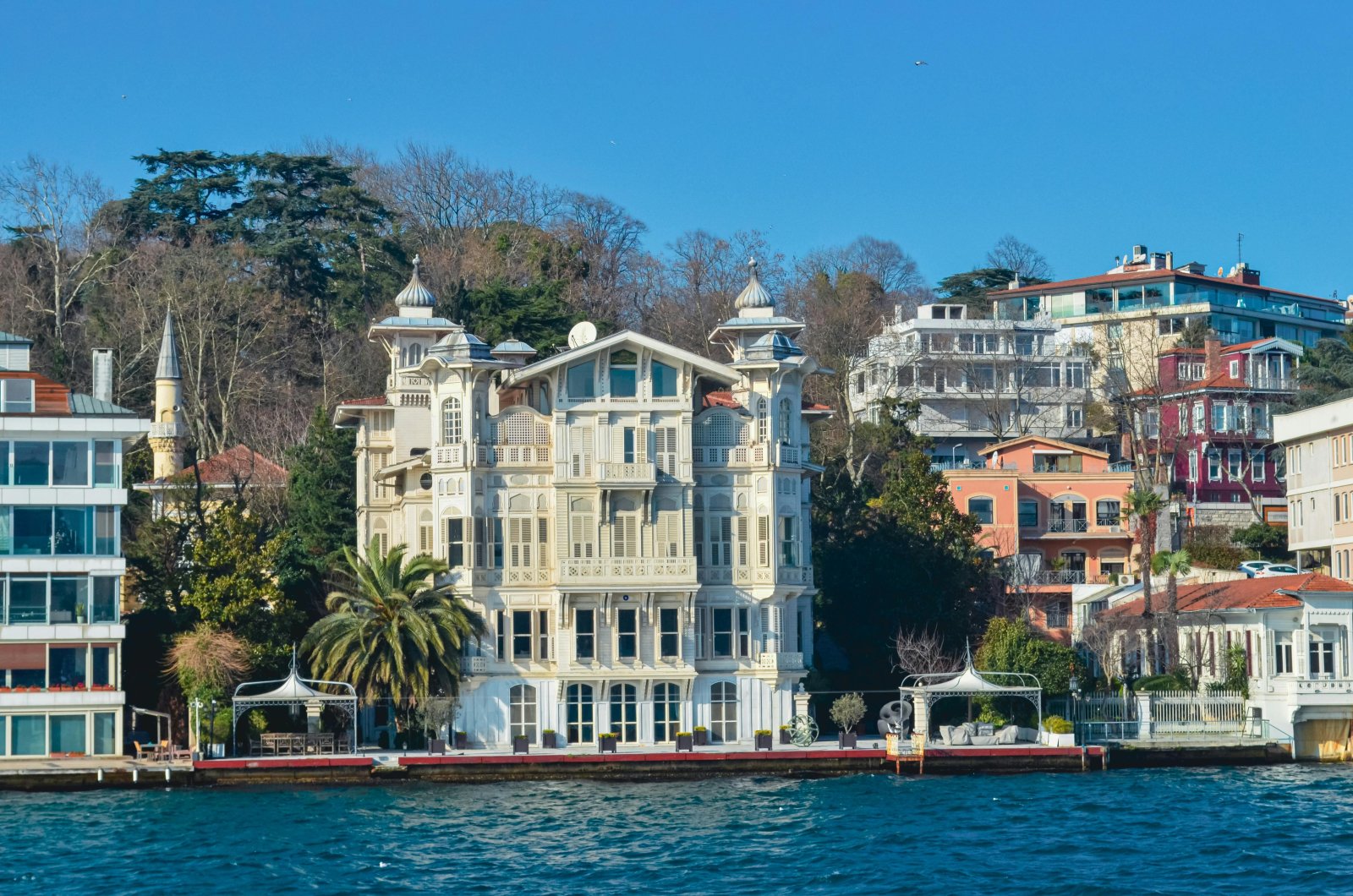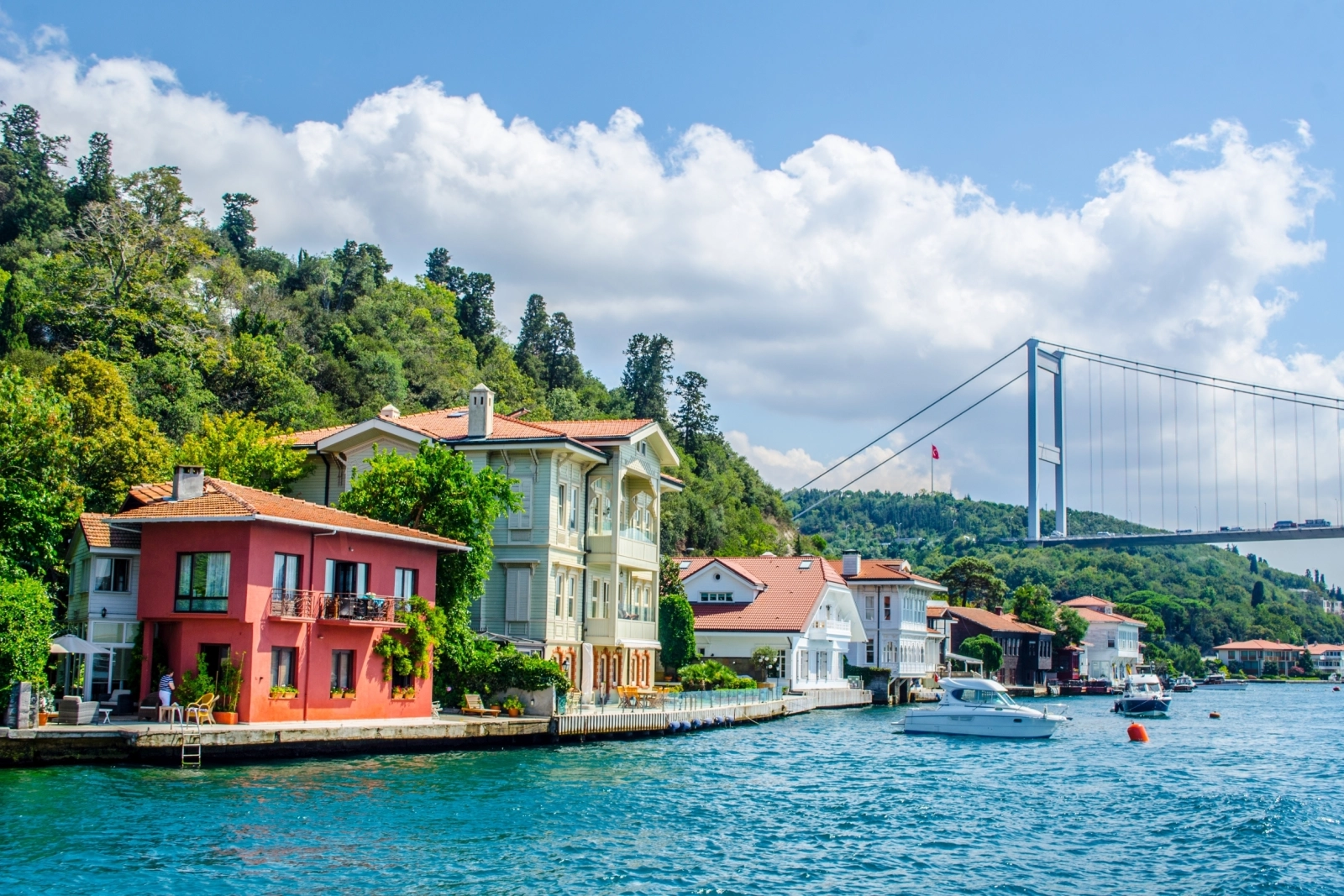Discover Yalıs: Breathtaking Waterside Mansions of the Bosphorus
Istanbul is a city where history and modernity blend seamlessly, and few sights capture this contrast as elegantly as the yalıs—the grand (mostly wooden) mansions lining the Bosphorus Strait. These waterfront homes, with their stunning views and rich histories, are among the city’s most treasured architectural gems. Exploring these beautiful residences is an unforgettable way to experience the city's charm, history, and luxury.
What is a Yalı? Understanding the Concept
The word yalı comes from the Greek word "yialos" meaning seashore. These exquisite waterside mansions were originally built during the Ottoman period, primarily in the 18th and 19th centuries (the oldest remaining one dates back to 1699), as summer residences for the empire’s elite. Ottoman sultans, pashas, and wealthy merchants constructed these homes along the Bosphorus to escape the heat of the city while enjoying the refreshing breezes of the strait.
Each yalı was designed with direct access to the water, allowing residents to travel by boat rather than by land. These mansions feature elaborate wooden facades, large windows facing the sea, and elegant gardens. Today, they are among the most valuable properties in Istanbul, owned by Turkish business tycoons, artists, and even international celebrities.
The Social and Historical Meaning of Yalı
Yalıs are more than just luxurious homes; they hold deep cultural and historical significance in Istanbul. During the Ottoman era, these mansions symbolized wealth, power, and social status. The elite of the empire used them not only as summer retreats but also as venues for political gatherings, literary salons, and diplomatic meetings.
In addition, yalıs played a role in shaping Ottoman and Turkish literature. Many renowned writers and poets, such as Yahya Kemal Beyatlı, Ahmet Mithat Efendi, Abdülhak Şinasi Hisar and Halit Ziya Uşaklıgil, wrote about life in the yalıs, depicting them as symbols of both opulence and nostalgia.
A yalı was usually divided in two parts: Harem (Women’s section) and Selamlık (Men’s section). The construction of the yalıs was also according to one’s religion. The ones built by the Muslims were not right next to the Bosphorus but a bit behind, allowing the inhabitants to be more comfortable by not being seen by the passer-by on the Bosphorus. The ones of the non-Muslims didn’t leave such a gap since they didn’t have this division.
After the fall of the Ottoman Empire, many yalıs fell into disrepair or were repurposed. Some were abandoned, while others were converted into hotels, museums, or restaurants, reflecting Istanbul’s transformation over the 20th century. Despite these changes, yalıs continue to be an essential part of Istanbul’s identity, representing both its historical grandeur and modern-day exclusivity.
Yalıs in Popular Culture
Yalıs have gained widespread recognition through their frequent appearances in Turkish TV series and films. These grand mansions serve as the backdrop for many dramas and romance series, often representing wealth, power, and family legacy.
Due to their association with drama and prestige, yalıs have become a status symbol in modern Turkish pop culture. Many viewers admire these stunning homes and dream of experiencing life in one. Additionally, they have inspired filmmakers and photographers worldwide, further solidifying their reputation as iconic elements of Istanbul’s visual and cultural identity.
See below some of the most famous TV series and movies that were shot in a yalı:
-
Aşk-ı Memnu (The Forbidden Love): Vehbi Koç Büyükdere House
-
İstanbul Kırmızısı (Rosso Istanbul): Hekimbaşı Salih Efendi Yalısı
-
Öyle Bir Geçer Zaman ki (As Time Goes By): Fuat Paşa Yalısı
-
Yalı Çapkını (The Golden Boy): Şevket Paşa Yalısı
How to Experience Yalı Culture?
Since most yalıs are private homes, the best way to see them is from the water. Here are a few ways you can admire these architectural wonders:
-
Take a Bosphorus Cruise – Several tour companies offer short and long cruises along the strait, giving you front-row views of the yalıs. See our curation of the best Boshorus cruise tours here. (link gelecek)
-
Dine at a Yalı-Turned-Restaurant – Some mansions have been converted into high-end restaurants, such as Lacivert or A'jia Hotel, where you can enjoy fine dining by the water.
-
Visit a Publicly Accessible Yalı – Some yalıs, like Küçüksu Pavilion, function as museums and are open to visitors. Mehmet Emin Efendi Yalısı has been recently rebuilt according to its original plan and often hosts art exhibitions. Perili Köşk is used as a contemporary art museum, open exclusively on the weekends. Fuat Paşa Yalısı hosts some theater plays from time to time.
The Most Beautiful 10 Yalıs on the Bosphorus
1. Ahmed Afif Paşa Yalısı
Located between İstinya and Yeniköy, this yalı was built in the end of the 19th century by the famous French architect of Istanbul, Alexandre Vallauryin the neoclassical style. After the death of Ahmed Afif Pasha, the yalı was sold to a merchant from Beirut, Misbah Muhayyes. This merchant met Atatürk, the founder of the Turkish republic, in Syria during the World War I. A while after the founding of the young republic, Mr. Muhayyes became a Turkish citizen and later bought Pera Palas, one of the most luxurious and beautiful hotels in Istanbul.

Ahmet Afif Pasha Yalı on the waterfront of the Bosphorus
2. Yılanlı Yalı
This rather old yalı (late 18th century), located in Bebek, is named “The Yalı with Snakes” after an interesting story. According to the story, one day Sultan Mahmud II saw the yalı of his foreign minister, Mustafa Efendi. He liked this yalı a lot and wanted to buy it. Said Efendi, who is the common friend of the Sultan and the minister, decided to invent a myth to save his friendship: The yalı was in fact full of snakes and it was a really bad decision to buy it. This story gave the yalı its name, which survived up to this day.
3. Sait Halim Paşa Yalısı
Built-in an eclectic style, this yalı is located in the main street of Yeniköy, only 100 meters away from the pier. Sait Halim Paşa was the grandson of the Egypt Governor Muhammed Ali Pasha. He was an interesting profile since he was born in Egypt and studied politics in Lausanne, Switzerland. He spoke five languages, his native Turkish, Arabic, Persian, French and English. After his studies, he worked in the government for a while, but during the reign of Abdulhamid II (a very controversial figure in the Ottoman Empire), he decided to join Jeune Turcs movement (the dissident Young Turks agains the regime). This movement finally rose to power with a coup d’état and Sait Halim Pasha became foreign minister and then prime minister.
4. Sadullah Paşa Yalısı
Located in the Asian side of the Bosphorus, this yalı has a unique baroque interior with remarkable ceiling artwork. Painted in the classic color of a yalı, red ochre, this yalı is named after not its builder but its most important buyer, Sadullah Pasha. Both a minister and a man of culture, he translated the poems of French writer Alphonse de Lamartine and wrote poems of his own. He supposedly had a relationship with a foreigner woman and depression out of his anxiety about this relationship getting public led him to suicide.
5. Kont Ostrorog Yalısı
One of the oldest buildings of the Bosphorus, this yalı in Kandilli was originally named Server Paşa Yalısı but later bought by the Polish-born-French legal advisor of the Ottoman Empire, Comte Léon Ostrorog. After studying law in Paris, Comte Ostrorog came to Istanbul first thanks to Turkish students he met in Paris, then as a legal advisor to the Empire. He loved the city so much that he decided to become a lawyer here passing all the exams. He married to a daughter of Lorandos, one of the banker families in Galata. One of the frequent guests of the Comte was Pierre Loti, another lover of Istanbul who wrote many books about the city and gave his name to a hill in Eyüp.
6. Perili Köşk
Located in Rumeli Hisarı, this yalı is also known as Yusuf Ziya Pasha Konağı. A remarkable building with its tower, this mansion is today used as the office of Borusan Holding in the weekdays and a contemporary art museum in the weekend. Construction of the building started in 1910s but halted due to the World War I. Left abandoned for decades after the war, the mansion was named “Perili Köşk”, the haunted mansion. The building is finally renovated in 1990s and was rented by Borusan Holding until 2030. Since 2011, it is used as a contemporary art museum in the weekends, offering interesting art works and one of the best views of the Bosphorus at the same time.
7. Emine Valide Paşa Yalısı (Egypt Consulate Building)
Built in the art nouveau style, this yalı is without a doubt one of the flashiest mansions of the Bosphorus. Owned by several prime ministers and statemen, it was finally bought by Sultan Abdulhamid II and he gifted it to Emine Valide Pasha, the only woman in the Ottoman empire to hold the title “Pasha”. Her son, Abbas Hilmi Pasha the governor of Egpyt for 30 years, until he was removed by the British in 1914, claiming that he was pro-Ottoman. After the founding of the Turkish Republic in 1923, Emine Valide Pasha decided to gift the yalı to the Turkish republic, however she renounced this decision and gifted the yalı to Egypt instead after being addressed as Bebekli Emine Hanım (the lady from Bebek Ms. Emine) by the Turkish government, since in the newly founded republic, there were no titles like Pasha anymore.
8. Huber Mansion
Another Art Nouveau mansion, located in Tarabya, this mansion was built in the late 19th century. It was named after Auguste Huber, a representative of the German armament firm Krupp. He bought the mansion due to its closeness to the German embassy in Tarabya. Huber left Istanbul after the World War I and the mansion changed hands a few times until its nationalization in 1985. Since then, the building has been used as a presidential residence.
9. Zeki Paşa Yalısı
Located in Rumeli Hisarı, just under the Fatih Sultan Mehmet Bridge, this yalı is one of the most expensive ones in the Bosphorus. A rare example of a yalı made of stone, it was named after Zeki Pasha, a close friend of Abdulhamid II and a marechal. After his death, the yalı was inhabited by Ömer Faruk Efendi, the son of last Ottoman caliph Abdülmecid Efendi, and his wife Sabiha Sultan, the daughter of the last Ottoman sultan Vahdettin.
10. Zarif Mustafa Paşa Yalısı
One of the biggest buildings of the Bosphorus in the past, this yalı located in Beykoz is a mix of neoclassical style and traditional Turkish architecture. The yalı was bought by Zarif Mustafa Paşa, a governer of several cities in the Ottoman Empire. The yalı was largely damaged after a ship crash in 1990, causing only the Selamlık (men’s section) of the yalı to survive today.

